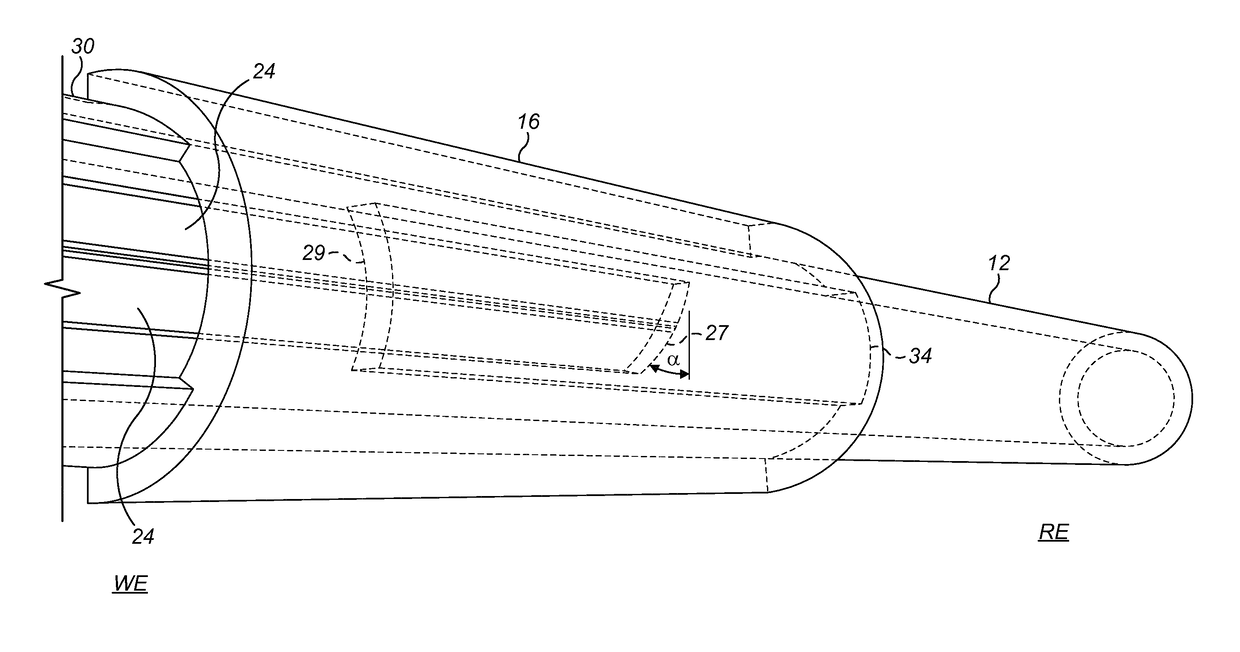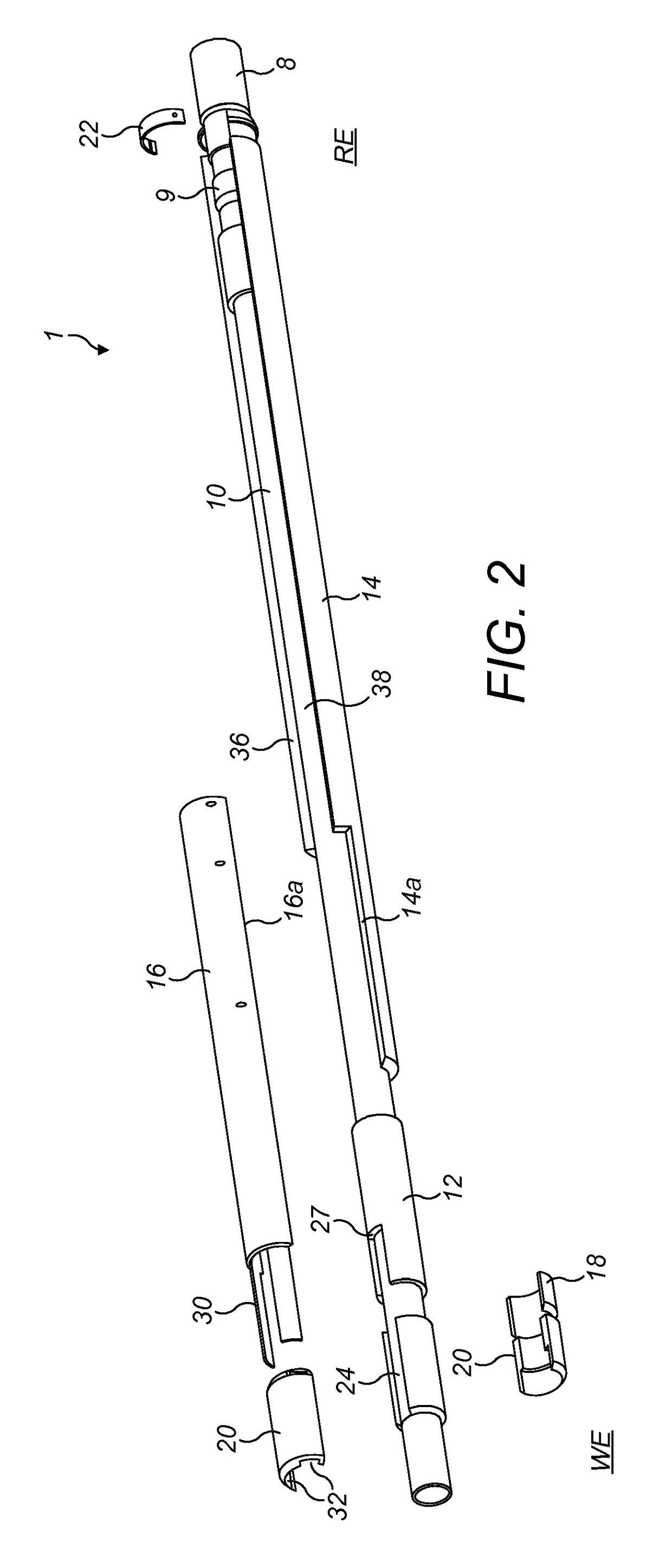Downhole umbilical release assembly
a technology for releasing the assembly and umbilical, which is applied in the direction of earthwork drilling, borehole/well accessories, etc., can solve the problems of affecting later operations, affecting the operation of the wellbore, and requiring tedious and time-consuming operations to clear the wellbore of excess downhole umbilical, etc., to achieve the effect of facilitating the installation of the release assembly of the umbilical
- Summary
- Abstract
- Description
- Claims
- Application Information
AI Technical Summary
Benefits of technology
Problems solved by technology
Method used
Image
Examples
example
[0113]A downhole umbilical release assembly according to a preferred embodiment of the invention has been tested with three different cutting configurations of the first and second edges.
[0114]The guillotine alignment sub was fitted with two SCRAMS® Flatpacks (dimension 36 mm×12 mm) consisting of two 8 mm bumper bars and one ¼″ hydraulic line and one ¼″ electric line which are all encapsulated and a single hydraulic Flatpack (dimension 11 mm×11 mm) consisting of one ¼″ hydraulic control line encapsulated.
[0115]The three different configurations tested were as follows:[0116]1) The first cutting edge had a square shoulder (90 degrees) and had a relative cutting angle α to the second cutting edge of 15 degrees,[0117]2) The first cutting edge had a square shoulder (90 degrees) and had a relative cutting angle α to the second cutting edge of 30 degrees, and[0118]3) The first cutting edge had 30 degree shoulder and a relative cutting angle α to the second cutting edge of 30 degrees. The r...
PUM
 Login to View More
Login to View More Abstract
Description
Claims
Application Information
 Login to View More
Login to View More - R&D
- Intellectual Property
- Life Sciences
- Materials
- Tech Scout
- Unparalleled Data Quality
- Higher Quality Content
- 60% Fewer Hallucinations
Browse by: Latest US Patents, China's latest patents, Technical Efficacy Thesaurus, Application Domain, Technology Topic, Popular Technical Reports.
© 2025 PatSnap. All rights reserved.Legal|Privacy policy|Modern Slavery Act Transparency Statement|Sitemap|About US| Contact US: help@patsnap.com



